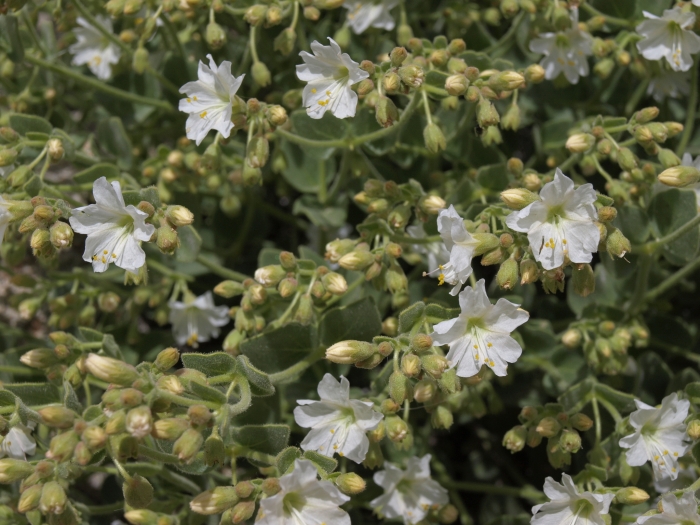Wishbone-Bush
(Mirabilis laevis var. villosa)
Wishbone-Bush (Mirabilis laevis var. villosa)
/
/

Jim Morefield
CC BY 4.0
Image By:
Jim Morefield
Recorded By:
Copyright:
CC BY 4.0
Copyright Notice:
Photo by: Jim Morefield | License Type: CC BY 4.0 | License URL: http://creativecommons.org/licenses/by/4.0/ | Rights Holder: Jim Morefield | Publisher: iNaturalist | Date Created: 2016-04-30T18:16:53Z |





































Estimated Native Range
Summary
Mirabilis laevis var. villosa, commonly known as Wishbone-Bush, is a deciduous perennial herb or subshrub native to desert washes, rocky slopes, and chaparral communities in the Southwestern USA, particularly in California and Arizona. It typically grows to a height of 3 feet (0.9 meters) and a width of 1 foot (0.3 meters). The plant features a branching structure that often forms a characteristic "wishbone" shape. It produces trumpet-shaped white to pinkish flowers that are most abundant in the spring but can continue to bloom sporadically through summer and fall, attracting pollinators such as hummingbirds and moths.
Wishbone-Bush is valued for its drought tolerance and is often used in xeriscaping and native plant gardens. It requires minimal maintenance once established and is well-suited for full sun exposure, thriving in soils with fast drainage. While it is not commonly used for culinary or medicinal purposes, it is appreciated for its ability to adapt to arid conditions and its contribution to native wildlife habitats. Gardeners should be aware that it may self-seed and spread if conditions are favorable, but it is not typically aggressive or invasive.CC BY-SA 4.0
Wishbone-Bush is valued for its drought tolerance and is often used in xeriscaping and native plant gardens. It requires minimal maintenance once established and is well-suited for full sun exposure, thriving in soils with fast drainage. While it is not commonly used for culinary or medicinal purposes, it is appreciated for its ability to adapt to arid conditions and its contribution to native wildlife habitats. Gardeners should be aware that it may self-seed and spread if conditions are favorable, but it is not typically aggressive or invasive.CC BY-SA 4.0
Plant Description
- Plant Type: Herb, Subshrub
- Height: 1-2 feet
- Width: 0.5-1 feet
- Growth Rate: Moderate
- Flower Color: White
- Flowering Season: Spring, Summer, Fall
- Leaf Retention: Deciduous
Growth Requirements
- Sun: Full Sun
- Water: Low, Very Low
- Drainage: Fast
Common Uses
Bee Garden, Bird Garden, Butterfly Garden, Deer Resistant, Fragrant, Groundcover, Hummingbird Garden, Low Maintenance, Rabbit Resistant
Natural Habitat
Native to desert washes, rocky slopes, and chaparral communities in the Southwestern USA
Other Names
Common Names: Wishbone Bush
Scientific Names: , Mirabilis laevis var. villosa, Mirabilis bigelovii, Mirabilis bigelovii var. bigelovii, Mirabilis bigelovii var. aspera, Mirabilis californica var. villosa, Mirabilis aspera, Hesperonia bigelovii, Hesperonia aspera subsp. villosa, Mirabilis laevis var. aspera
GBIF Accepted Name: Mirabilis laevis var. villosa (Kellogg) Spellenb.